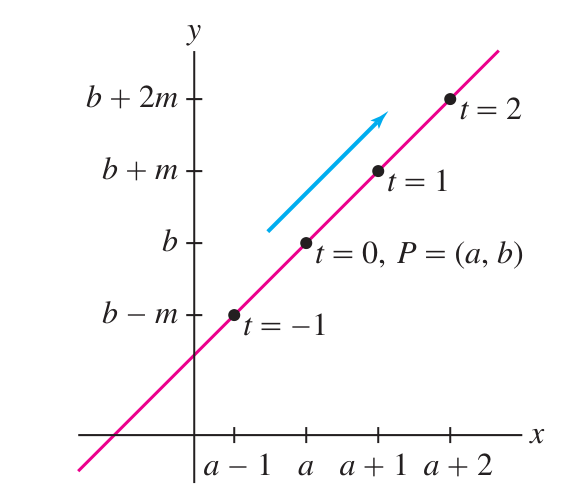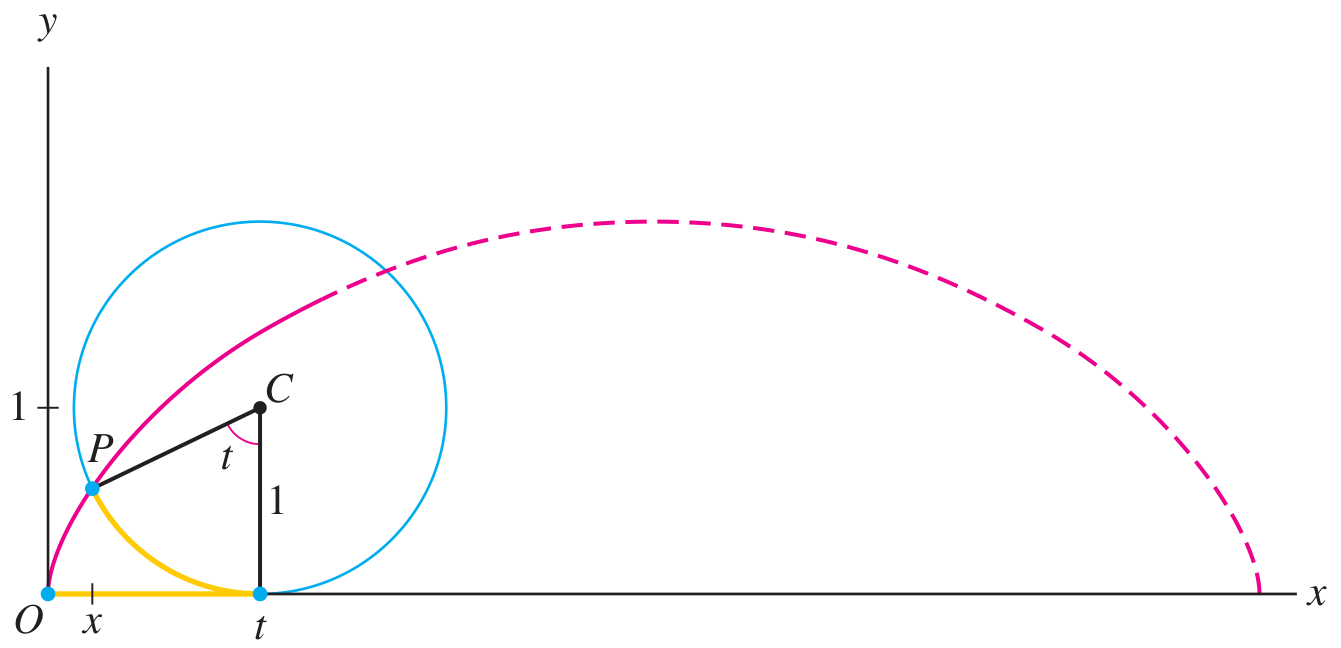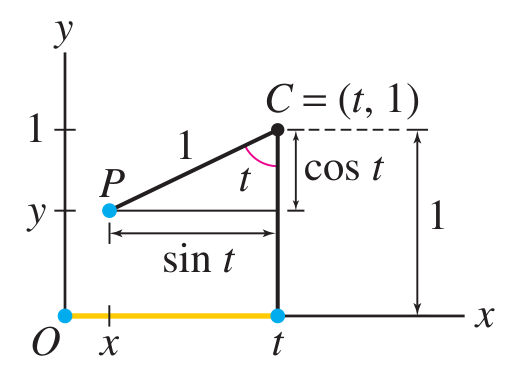Parametric circles
The standard equation of a circle of radius
This equation says that the distance from a point
Parametric coordinates for the circle:
For example, the unit circle
Parametric lines
(1) Parametric coordinate functions for a line:
Compare this to the graph of linear function:
Vertical lines cannot be described as the graph of a function. We must use
(2) Parametric lines can describe all lines equally well, including horizontal and vertical lines.
A vertical line
A horizontal line
A non-vertical line
(3) Assuming that
and therefore the slope is
(4) The point-slope construction of a line has a parametric analogue:

Parametric ellipses
The general equation of an ellipse centered at
This equation represents a stretched unit circle:
- by
in the -axis - by
in the -axis
Parametric coordinate functions for the general ellipse:
Parametric cycloids
The cycloid is the curve traced by a pen attached to the rim of a wheel as it rolls.

It is easy to describe the cycloid parametrically. Consider the geometry of the situation:


The center
The triangle shown has base
So the coordinates of the point
If the circle has another radius, say